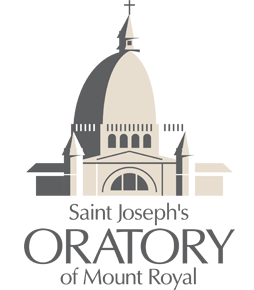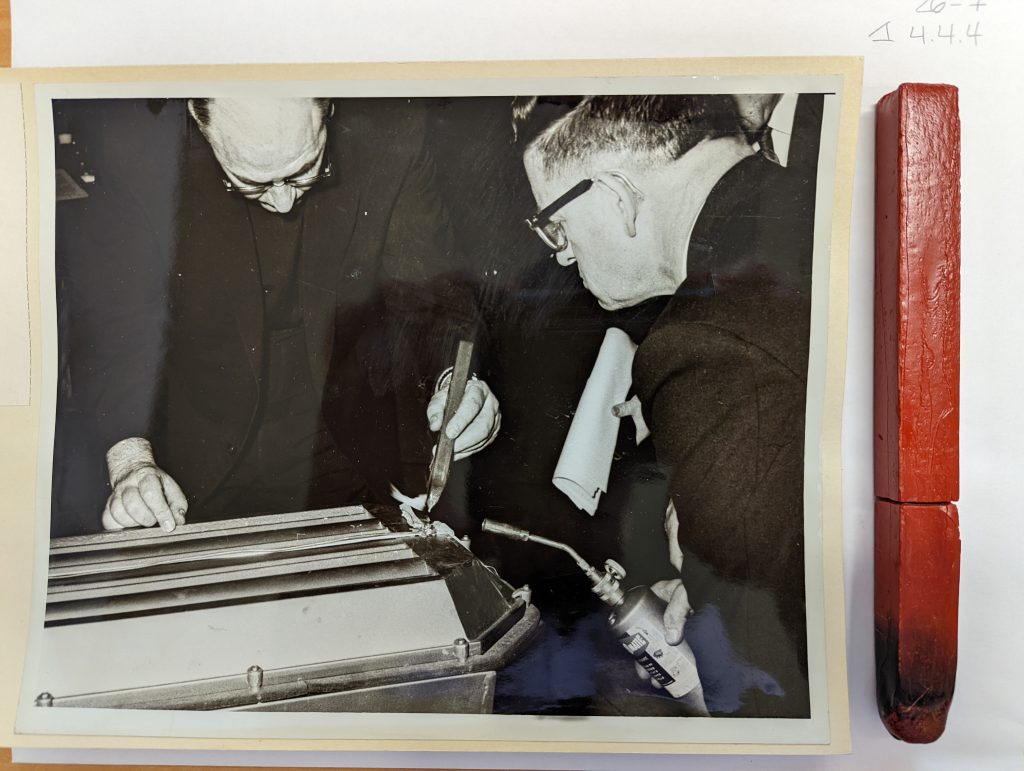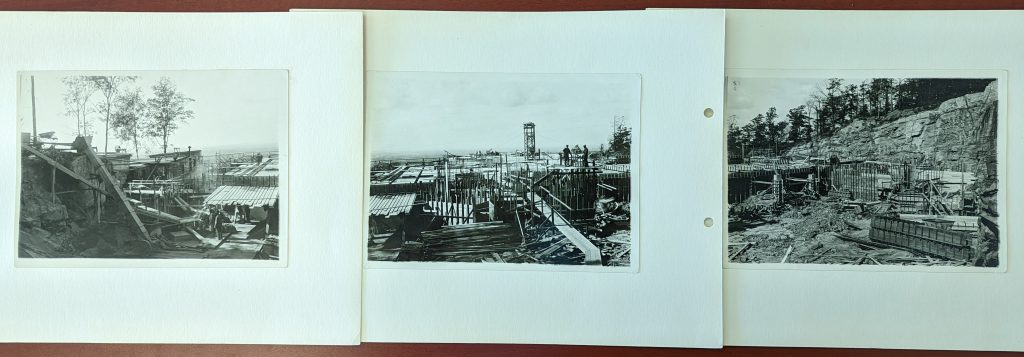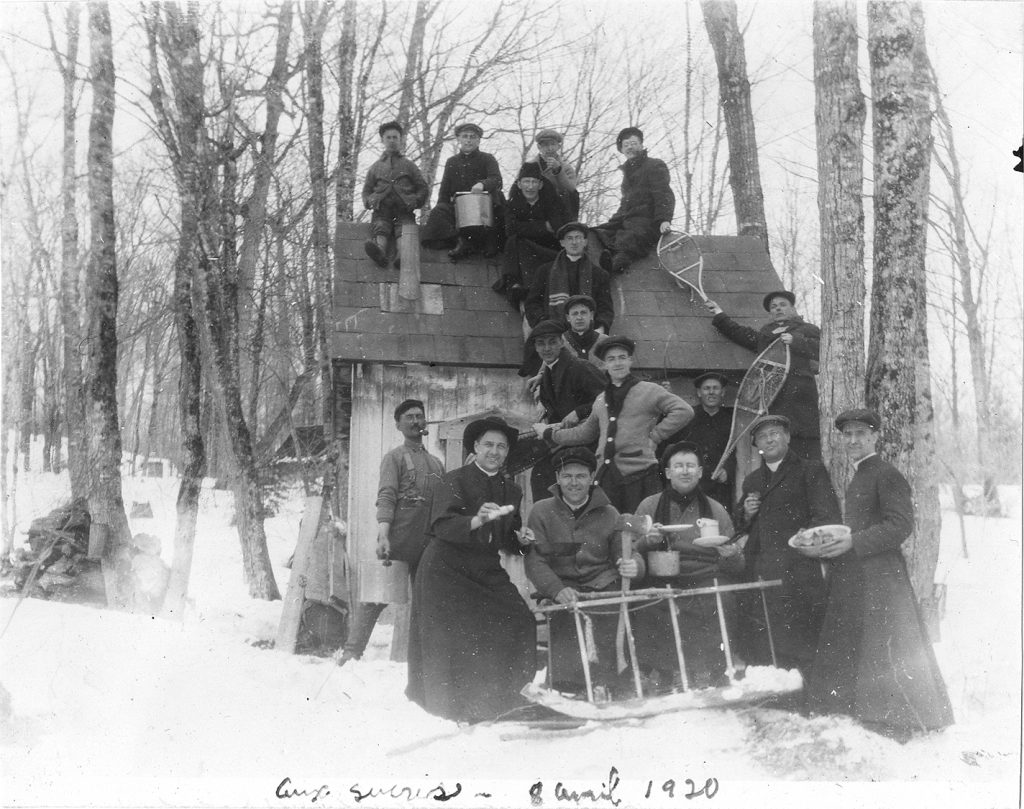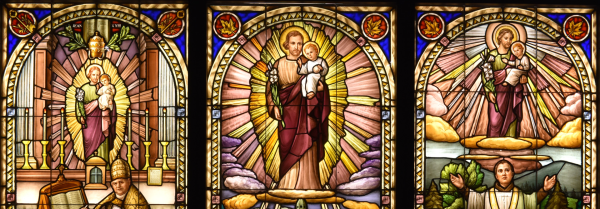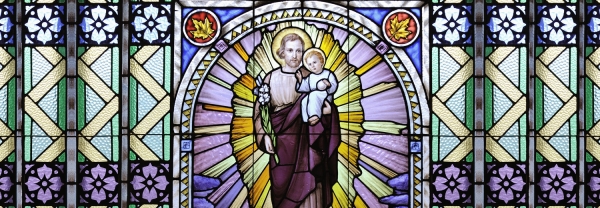An Unsuspected Visual Treasure
The Roland Gauthier Archives and Documentation Centre was able to continue a project to describe our old photos thanks to a grant from Bibliothèques et Archives nationales du Québec (BAnQ). This year, 1581 photos were added to the 844 photos processed in 2021.
These photos come from 18 series on the following themes: the opening of Brother André’s tomb, the Original Chapel at different periods, the phases of the construction of the Oratory, the construction of the loft organ, the installation of the Beckerath Organ and its concerts, special events in the Basilica, aerial views of the Oratory, and the Oratory’s religious.
This post presents my research process, some of my discoveries and my favorite.
Sealing of Brother André’s New Coffin
Sometimes we find objects in the archives that seem insignificant and without meaning. For example when we found a red wax stick in 2017 while processing the archives of Brother André’s office for the cause. Logically, I thought it had possibly been used to seal important documents, but why keep it? It was only five years later, while processing the photos of the opening of Brother André’s tomb, that we understood.
In this photo, Father Camille Lahaise, a member of the Apostolic Tribunal, holds the wax stick over a ribbon used to seal Brother André’s new coffin.
CADRG, photos 115_07, 115_11 et 115_12
CADRG, photos 115_08, 115_55 et 115_65
To facilitate the classification of the photos, we first spread them out on a table in order to arrange them in chronological order. Often the photos are not dated, so a good sense of observation is required. And what a surprise we had when analyzing the series 115 dedicated to the construction of the Basilica.
The photos 115_07, 115_11 and 115_12, as well as 115_08, 115_55 and 115_65, came together to form two panoramas of the basilica under construction. At the time they were taken, there were two methods of making wide-angle panoramas, either to take an ordinary photo and cut off the top and bottom, or to take several photos by moving the camera slightly and then stitching them together. It is this second solution that Brother Denis, c.s.c., preferred for his photos. He was one of the Oratory’s photographers from the 20’s to the 40’s and his photos were generally dedicated to the Oratory’s magazine.
Unfortunately for him, only two photos of the second panorama, 115_08 and 115_55, were used in the magazine, but one on top of the other rather than together.
Photo edit 115_07, 115_11 et 115_12
Photo edit 115_08, 115_55 et 115_65
115_08, 115_55 and 115_65 are from August 1, 1927 and were taken at the esplanade level. At that time, the 3rd, 4th and 5th floors were just a concrete skeleton waiting for its granite flesh. The floors of what is now the basilica were only a structure made of a wooden formwork to receive the concrete and give it a shape. At the level of the transept, we can see that the work is less advanced than on the rest of the site. If the panorama has not been published in this form, it is probably because part of the left side of the transept has not been photographed. This explains the white band on this montage.
Outing to the Sugar Shack
CADRG, photo 211.073_030b
Of the 2425 photos processed in the last two years, this one is one of my favorites. My late paternal grandfather, Georges Brideau, had a family sugar factory.
This photo comes from the sub-series dedicated to Father Émile Deguire, c.s.c. Unlike most of the other sub-series, the photos of Father Deguire also contain personal photos taken during his youth and training.
Photo 211.073_020b was taken on April 8, 1920 at Mr. Cloutier’s sugar factory in Château-Richer. Hence my many sweet memories of his youth.
I would like to end this article by giving special thanks to Father Réal Fréchette, CSC, who was of great help in identifying some of the people in the photos.
